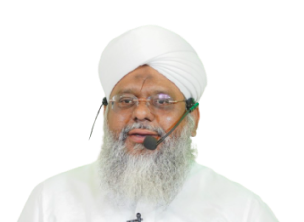
Dr. Mufti Syed Ziauddin Naqshbandi Mujaddidi Qadri
Shaykh Ul Fiqh, Jamia Nizamia; Founder - Director



After the Opening Takbeer, where should hands be placed?
After one says the Opening Takbeer (i.e. Takbeer Tahrima), where should one place hands in Salaat? Let us find this out in light of the Hadith of the Holy Prophet (Sallallahu alaihi wa sallam).
First Hadith
Hadhrat ‘Alqama bin Waail bin Hajar (May Allah be well pleased with him) relates on the authority of his father Hadhrat Waail (May Allah be well pleased with him), that Hadhrat Waail (May Allah be well pleased with him) said: I saw that the Holy Prophet (Sallallahu alaihi wa sallam) had placed His right hand over His left below the navel. This is related by Ibn Abi Shaiba.
Second Hadith
It is narrated on the authority of Hadhrat ‘Ali (May Allah be well pleased with him), he said that it is a Sunnah to place hands below the navel, one above the other. This is related by Abu Dawood, Imam Ahmed, Ibn Abi Shaiba, Daraqutni and Baihaqui.
Third Hadith
It is narrated on the authority of Hadhrat Ibrahim Nakha’i (May Allah be well pleased with him), that he would place his hands below the navel, the right hand on the left. This is related by Imam Muhammad in Al Aathaar.
Ruling for women
The ruling that hands should be placed below the navel after the Opening Takbeer is for men. Women should place their hands on their chest. (Sa’aaya)
Excellence of spending more time in the standing portion (Qiyaam) of the Salaat
It is narrated on the authority of Hadhrat Jabir (May Allah be well pleased with him), he said that the Holy Prophet (Sallallahu alaihi wa sallam) said: That Salaat which has long Qiyam has more excellence.
This is related by Muslim.
We learn from this Hadith that having long Qiyam in Salaat is preferable than offering more Raka’at of Salaat. For e.g., if one person offers less number of Raka’at but has long Qiyam by reciting more from the Holy Quran, then this person’s Salaat is more excellent than that of the person who recites less from the Holy Quran but offers more number of Raka’at. This is because in the standing portion of the Salaat (i.e. the Qiyam) more Holy Quran is recited whereas when offering more number of Raka’at, the litanies of the Ruku’ and prostrations are recited in a greater number and obviously the Holy Quran has much more excellence than other litanies.
Another reason for the excellence of long Qiyam is that the Holy Prophet (Sallallahu alaihi wa sallam) would offer only 8 Raka’at in Tahajjud, but would recite the longest portions of the Holy Quran in these Raka’at and thus lengthen His Qiyam. In the Hanafi School of jurisprudence, the authoritative opinion is that long Qiyam has more excellence than more number of Raka’at.
It should be remembered that the excellence of Qiyam described in the previous lines is only in Supererogatory (Nafl) Salaat. In Obligatory (Fardh) and Sunnah Salaat, keeping the Qiyam, the Ruku’ and prostration as per the Sunnah carries more excellence. (Multaqa, Kanz, Mirqaat)
[Excerpted from Noor Ul Masabeeh, Kitaab Us Salaat, Baabu Sifatis Salaat]